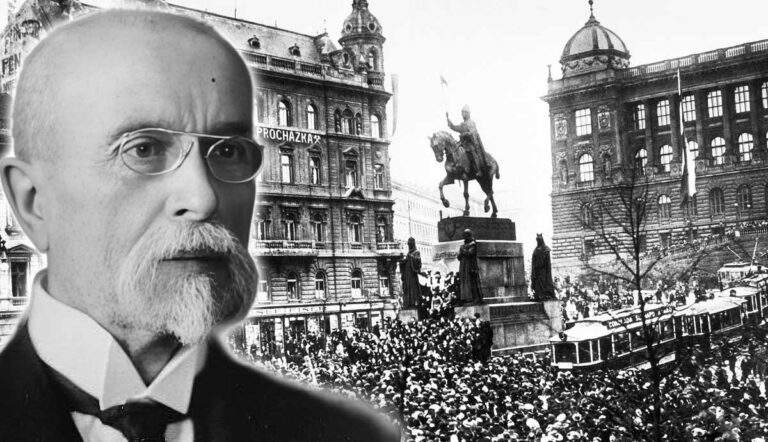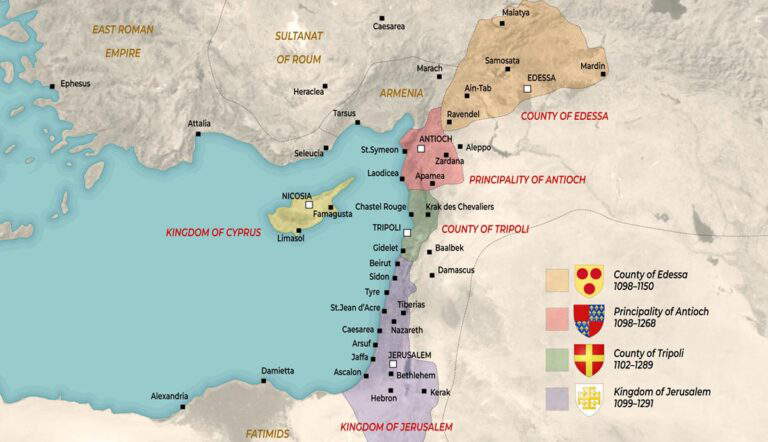
Patrick Bodovitz
Patrick earned his bachelor’s degree from Gettysburg College where he majored in political science and minored in history. His main focus of study was on the intersection of American politics and international affairs. He followed with a master’s degree from the American University School of International Service where he studied conflict and peace. Patrick published for AU’s academic journal and the International Policy Journal at the Center for International Policy.
Articles by Patrick Bodovitz
 How Did Czechoslovakia Become a Country?
How Did Czechoslovakia Become a Country?The creation of Czechoslovakia after WWI was considered a very successful example of 20th-century nation-building.
 The Four Crusader States in the Holy Land
The Four Crusader States in the Holy LandThe four Crusader states in the Holy Land were founded during the First Crusade, serving as a Christian foothold in the Levant for two centuries.
The four Crusader states in the Holy Land were founded during the First Crusade, serving as a Christian foothold in the Levant for two centuries.
 How the Treaty of Kanagawa (1854) Ended the Tokugawa Shogunate
How the Treaty of Kanagawa (1854) Ended the Tokugawa ShogunateThe Treaty of Kanagawa ended Japan’s policy of isolation and set the country on the path to reform, modernization, and imperialism.
The Treaty of Kanagawa ended Japan’s policy of isolation and set the country on the path to reform, modernization, and imperialism.
 Operation Torch: The Liberation of French North Africa
Operation Torch: The Liberation of French North AfricaOperation Torch in 1942 saw an allied American and British force liberate French North Africa from Axis control.
Operation Torch in 1942 saw an allied American and British force liberate French North Africa from Axis control.
 Battle of Saipan in WWII: The Other D-Day
Battle of Saipan in WWII: The Other D-DayAs part of the Allies’ island-hopping strategy in the Pacific Theater of WWII, the Americans landed on Saipan, one of Japan’s strongholds in the central Pacific.
As part of the Allies’ island-hopping strategy in the Pacific Theater of WWII, the Americans landed on Saipan, one of Japan’s strongholds in the central Pacific.
 Commodore Matthew Perry: The Man Who Forced Japan to Open Its Doors
Commodore Matthew Perry: The Man Who Forced Japan to Open Its DoorsIn 1853, US Navy Commodore Matthew Perry sailed a squadron of warships to Japan with the aim of ending Japan’s international isolation.
 Theodore Roosevelt & the Great White Fleet: A Show of American Naval Power
Theodore Roosevelt & the Great White Fleet: A Show of American Naval PowerThe sailing of the Great White Fleet was intended for the world to see America as a dominant naval power.
The sailing of the Great White Fleet was intended for the world to see America as a dominant naval power.
 Gunboat Diplomacy: How Military Power Reshaped Global Politics
Gunboat Diplomacy: How Military Power Reshaped Global PoliticsGunboat diplomacy was often pursued by great powers in the 19th century to compel weaker powers to grant them concessions.
 Roosevelt’s Big Stick: How America Flexed Its Muscle on the World Stage
Roosevelt’s Big Stick: How America Flexed Its Muscle on the World StageWhile serving as US president, Theodore Roosevelt embraced an assertive foreign policy in Latin America and Asia known as the Big Stick Policy.
While serving as US president, Theodore Roosevelt embraced an assertive foreign policy in Latin America and Asia known as the Big Stick Policy.
 Why European Militaries Collectively Downsized After the Cold War
Why European Militaries Collectively Downsized After the Cold WarWhat happened to European militaries at the end of the Cold War?
 Leahy Law: Context, Overview, & History
Leahy Law: Context, Overview, & HistoryHow did the Cold War lead to the passage of the Leahy Law?
How did the Cold War lead to the passage of the Leahy Law?